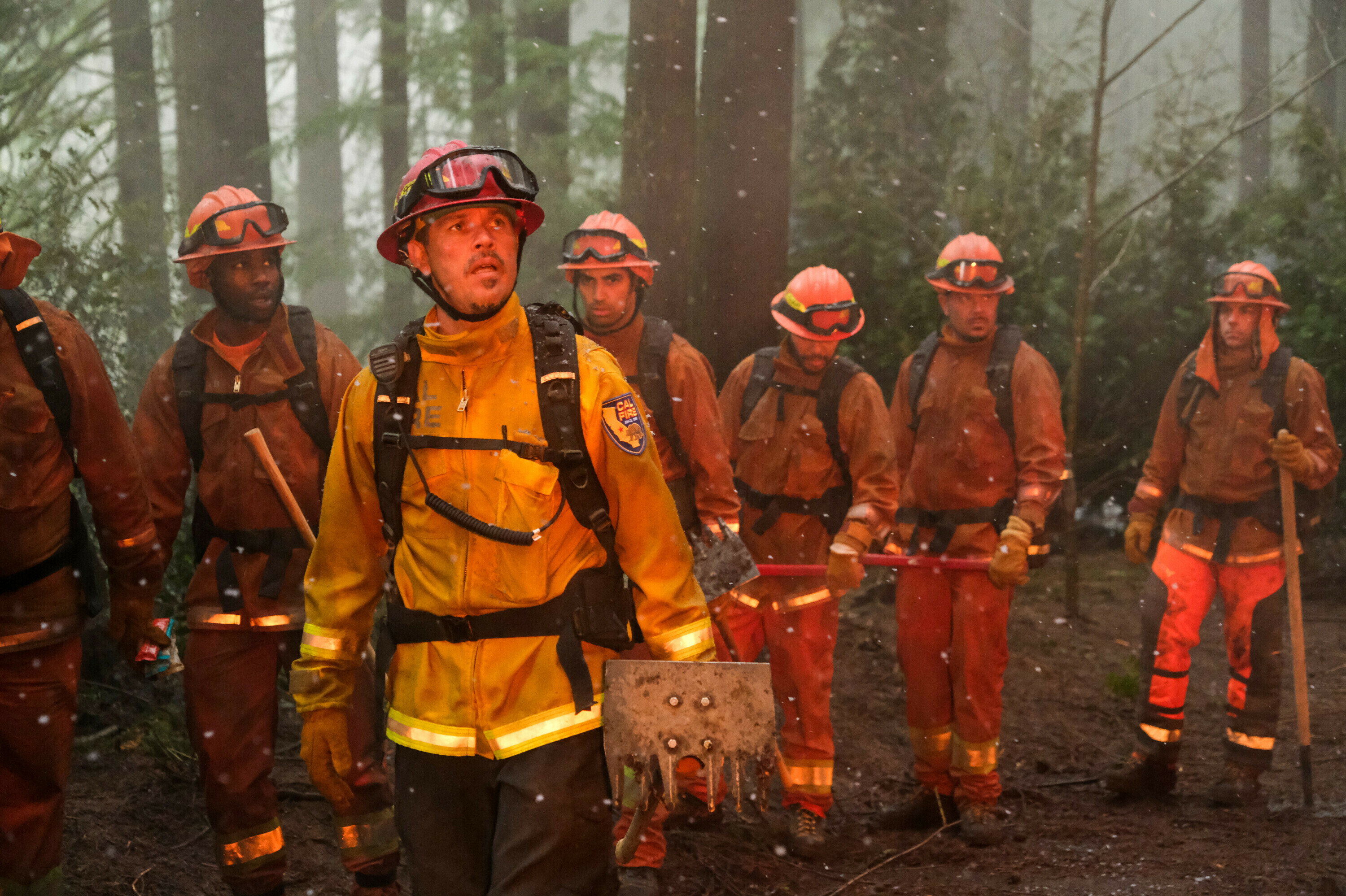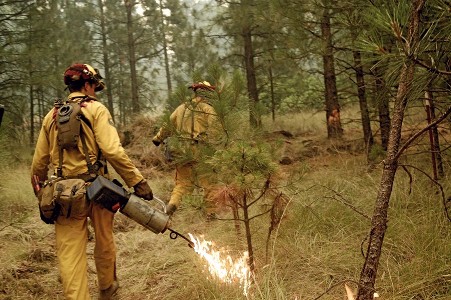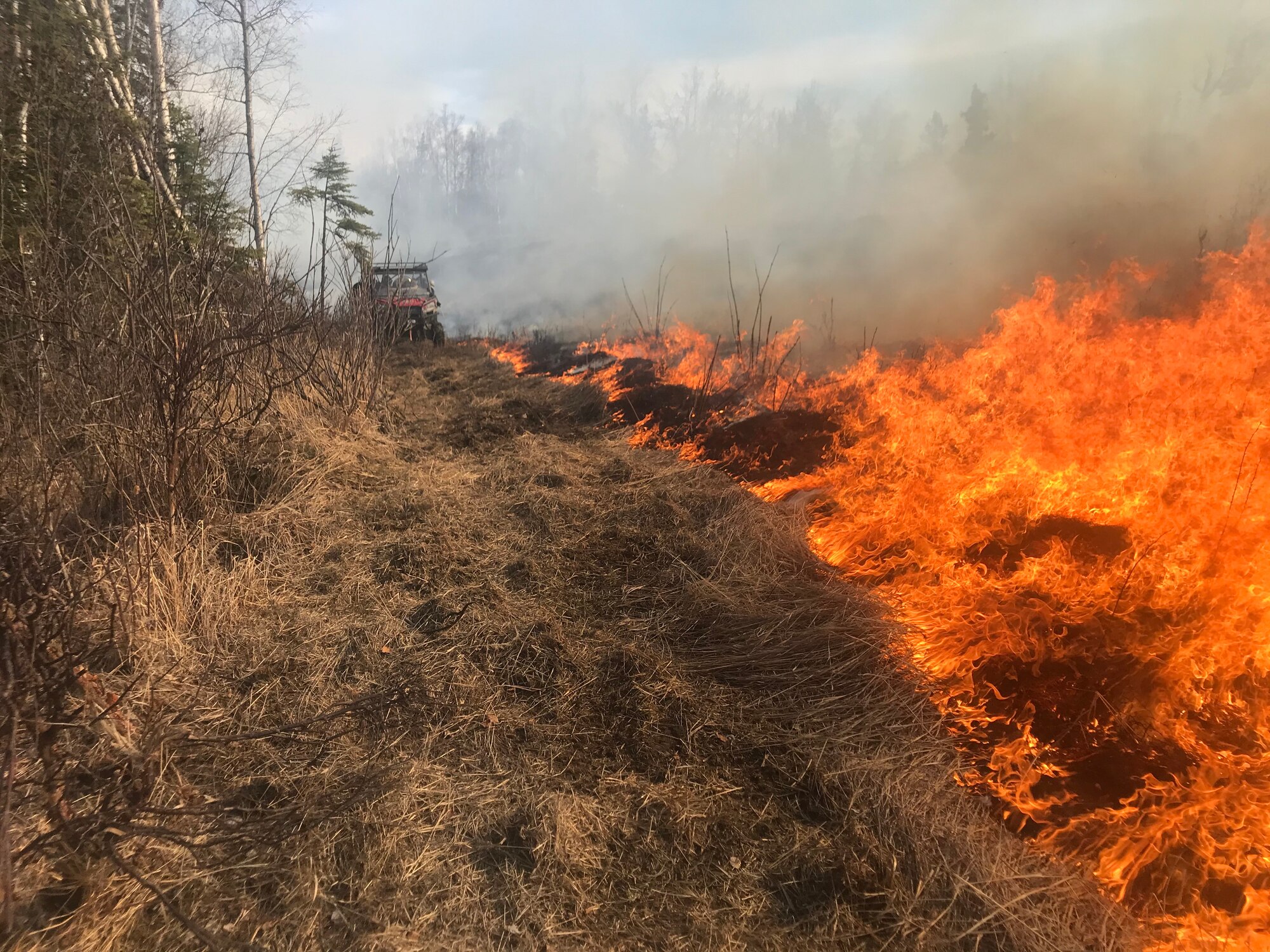Wildland Brush Trucks For Sale: Your Comprehensive Guide to Acquiring a Firefighting Essential cars.truckstrend.com
In the relentless battle against wildfires, a specialized vehicle stands as a frontline defender: the wildland brush truck. Unlike their urban structural firefighting counterparts, these rugged, agile machines are purpose-built to navigate treacherous terrain, suppress vegetation fires, and protect lives and property in remote, often unforgiving environments. For fire departments, private contractors, industrial facilities, and even large landowners operating in high-risk areas, acquiring a reliable brush truck is not just a purchase—it’s an essential investment in safety, preparedness, and operational capability.
This comprehensive guide delves into the world of wildland brush trucks for sale, offering insights into their design, what to look for when buying, where to find them, and how to ensure your investment serves its critical purpose effectively.
Wildland Brush Trucks For Sale: Your Comprehensive Guide to Acquiring a Firefighting Essential
Understanding the Anatomy of a Brush Truck: Built for the Wild
A wildland brush truck, often classified by the National Fire Protection Association (NFPA) as a Type 3, 4, 5, or 6 wildland engine based on its size and capabilities, is a highly specialized piece of apparatus. Its design prioritizes mobility, water delivery, and crew safety in off-road conditions. Key components include:
- Chassis: Typically a heavy-duty 4×4 or 6×6 truck chassis (e.g., Ford F-series, Dodge Ram, Chevrolet Silverado, Freightliner, International), chosen for its ground clearance, robust suspension, and all-wheel-drive capabilities. This allows it to traverse uneven terrain, steep grades, and unpaved roads.
- Water Tank: Made from durable materials like polypropylene or stainless steel, tanks usually range from 200 to 1,000 gallons, designed to be baffled to prevent water sloshing during movement.
- Pump System: The heart of the truck’s firefighting capability. Pumps can be PTO (Power Take-Off) driven from the truck’s engine or powered by a separate auxiliary engine. They are designed for high-pressure, low-volume output, ideal for direct attack on vegetation fires, and often feature "pump-and-roll" capability, allowing water discharge while the vehicle is moving.
- Hose Reels & Nozzles: Commonly includes a booster reel with hard-lined hose for quick deployment, along with multiple discharges for forestry hose (1-inch to 1.75-inch). Various nozzles allow for different spray patterns and flow rates.
- Foam Proportioning System: Most modern brush trucks include Class A foam systems. Class A foam acts as a wetting agent, significantly increasing water’s effectiveness by allowing it to penetrate fuels more deeply and adhere to surfaces, thus reducing water consumption and increasing suppression efficiency.
- Storage Compartments: Dedicated space for tools, personal protective equipment (PPE), chainsaws, hand tools, medical supplies, and other essential gear.
- Crew Protection Systems: Enhanced safety features such as robust roll-over protection, reinforced cabs, and sometimes even exterior "drenching" systems that spray water over the cab to protect against radiant heat.
- Lighting and Communications: High-intensity scene lighting, emergency warning lights, and integrated radio systems are standard for operational safety and coordination.
Why Consider a Used Wildland Brush Truck? Benefits and Considerations

While a new, custom-built brush truck offers the latest technology and full warranty, the market for used wildland brush trucks is vibrant for several compelling reasons:
Benefits:
- Cost-Effectiveness: This is often the primary driver. Used trucks can be significantly less expensive than new ones, making them accessible to volunteer departments, smaller agencies, or private contractors with limited budgets.
- Immediate Availability: Unlike new apparatus that can have lead times of 12-24 months or more, used trucks are typically available for immediate purchase and deployment.
- Proven Reliability: A well-maintained used truck from a reputable department or dealer has a track record of performance.
- Customization Potential: Many used trucks come with existing specialized equipment, but they also offer a canvas for further customization or upgrades to meet specific operational needs.

Considerations:
- Age and Mileage: Higher mileage and older vehicles may require more frequent maintenance or component replacement.
- Service History: A complete and transparent service history is crucial to understanding the vehicle’s past life and potential future issues.
- Compliance: Older trucks might not meet the latest NFPA standards, which could be a factor for some agencies or for insurance purposes.
- Hidden Issues: Without a thorough inspection, potential mechanical or system failures might go unnoticed until after purchase.
- Parts Availability: For very old or obscure models, finding replacement parts can become a challenge.
Key Factors When Evaluating a Brush Truck For Sale
Before making an offer, a meticulous evaluation is paramount. This isn’t just about kicking the tires; it’s a deep dive into the vehicle’s operational integrity.
-
Define Your Operational Needs:
- What type of terrain will it operate on most frequently (steep, rocky, sandy, paved)?
- What are the typical fire conditions in your response area?
- How many personnel will typically staff the truck?
- What water capacity is truly needed for your average response?
- Are there specific state or local regulations or NFPA standards you must adhere to?
-
Chassis Condition:
- Frame: Inspect for cracks, rust, or previous repair evidence.
- Engine & Transmission: Check for leaks, unusual noises, proper fluid levels, and smooth operation. Get a professional diagnostic scan.
- Suspension: Examine springs, shocks, and bushings for wear or damage.
- Brakes: Test stopping power and inspect pads, rotors, and lines.
- Tires: Assess tread depth and overall condition. Wildland tires are crucial.
-
Pump & Plumbing System:
- Pump Test: Insist on a full pump test to verify flow rates and pressure. Look for leaks during operation.
- Hoses & Valves: Inspect all hard lines, valves, and manifold connections for leaks, corrosion, or damage.
- Foam System: Verify the foam proportioner functions correctly and that the foam cell is intact.
-
Water Tank Integrity:
- Inspect for cracks, especially in polypropylene tanks, and signs of leaks.
- Ensure baffles are secure and properly installed to prevent water surge.
-
Safety Features:
- Verify all warning lights, sirens, and scene lighting are fully functional.
- Check seatbelt condition and proper function.
- If equipped, inspect rollover protection and any crew protection systems.
-
Documentation and History:
- Request all maintenance records, service logs, and previous inspection reports.
- Understand its previous use (frontline, reserve, training).
- Verify the title is clear and the VIN matches.
-
Pre-Purchase Inspection:
- Absolutely critical. Hire an independent, qualified mechanic or fire apparatus technician specializing in emergency vehicles to conduct a comprehensive inspection. Their expertise can uncover issues that are not apparent to the untrained eye.
Where to Find Wildland Brush Trucks For Sale
The market for used wildland brush trucks is diverse:
- Specialized Fire Apparatus Dealers: Many dealers specialize in new and used fire trucks, often offering warranties or reconditioning services.
- Government Surplus Auctions: Federal, state, and local governments regularly auction off retired apparatus. Websites like GovDeals.com or PublicSurplus.com are common platforms.
- Online Marketplaces: Websites such as Firetrucks.com, FiretrucksForSale.com, and even general equipment sites like eBay or Facebook Marketplace (with caution) list apparatus.
- Direct from Fire Departments: Departments often sell their retired trucks directly to other agencies or the public. Networking with fire chiefs and apparatus officers can uncover these opportunities.
- Industry Publications & Forums: Trade magazines and online forums for firefighters can have classified sections.
The Buying Process: From Inquiry to Delivery
- Research & Budgeting: Clearly define your needs and set a realistic budget, including potential post-purchase repairs or upgrades.
- Contact Sellers: Reach out with specific questions, request photos, and maintenance records.
- On-Site Inspection: Schedule a visit to personally inspect the vehicle and conduct a preliminary walk-around. If satisfied, proceed with the professional pre-purchase inspection.
- Negotiation: Be prepared to negotiate based on the truck’s condition, market value, and any identified issues.
- Financing: Explore options such as grants, loans, or lease-to-own programs, especially for non-profit fire departments.
- Paperwork & Title Transfer: Ensure all legal documentation is correctly handled, including title transfer and bill of sale.
- Transportation/Delivery: Arrange for safe and legal transportation of the vehicle to your location, especially if purchasing out of state.
Maintaining Your Investment: Post-Purchase Care
Acquiring the truck is just the first step. Proper, ongoing maintenance is crucial for its longevity and readiness.
- Preventative Maintenance: Adhere to manufacturer-recommended service intervals for engine, transmission, brakes, and differentials.
- Pump & Plumbing System: Regularly flush the pump, check for leaks, and perform routine maintenance. Winterize the system if operating in freezing climates.
- Tires: Monitor pressure, inspect for wear and damage, and rotate as needed.
- Foam System: Periodically test and calibrate the foam proportioner.
- Annual Professional Inspections: Schedule an annual inspection by a certified apparatus technician to catch potential issues early.
- Detailed Records: Keep meticulous records of all maintenance, repairs, and service performed.
Wildland Brush Trucks For Sale: Estimated Price Guide
Prices for wildland brush trucks vary significantly based on age, mileage, condition, features, chassis type, and geographical location. The table below provides a general estimate for the North American market, but these figures are highly variable.
| Category | Typical Age Range | Key Features/Condition | Estimated Price Range (USD) | Notes |
|---|---|---|---|---|
| New Custom-Built | Brand New | Latest technology, full warranty, customizable specs. | $250,000 – $600,000+ | Long lead times (12-24+ months). Built to specific NFPA standards and agency requirements. |
| Late Model Used | 3-8 Years Old | Low mileage, excellent condition, modern features, often well-maintained by previous department. | $150,000 – $250,000 | Good value, may still have some warranty or dealer reconditioning. Minor upgrades may be needed. |
| Mid-Age Used | 8-15 Years Old | Moderate mileage, good operational condition, may show some wear and tear. | $75,000 – $150,000 | Solid workhorses, may require some immediate maintenance or component updates (e.g., pump overhaul). |
| Older/Surplus | 15-25 Years Old | Higher mileage, fair to good condition, signs of age. | $30,000 – $75,000 | Best for budget-conscious buyers. Thorough inspection critical. May need significant updates. |
| "As-Is" Project | 25+ Years Old | High mileage, significant wear, mechanical issues, potential for major repairs. | $10,000 – $30,000 | Requires substantial investment in repairs and refurbishment. Best for those with in-house capabilities. |
Disclaimer: These are approximate ranges for typical wildland brush trucks (e.g., Type 3, 4, 6). Prices can fluctuate based on market demand, specific features (e.g., custom pump, advanced foam system), chassis brand, and overall condition. Always get a professional appraisal.
Frequently Asked Questions (FAQ) About Wildland Brush Trucks
Q: What is the difference between a Type 3, 4, 5, and 6 wildland engine?
A: These are NFPA classifications based on a vehicle’s minimum water tank capacity, pump flow, and crew size. Type 6 is the smallest (often a pickup truck conversion, 150-300 gallons), Type 5 is slightly larger, Type 4 is mid-sized, and Type 3 is the largest, often resembling a smaller structural engine, with higher water capacity (500+ gallons) and more robust pump systems, designed for extended wildland operations.
Q: Can a wildland brush truck be used for structural fires?
A: While they can provide some initial attack or exposure protection, brush trucks are primarily designed for wildland operations. Their pumps are high-pressure/low-volume, not ideal for the high-volume water delivery needed for structural fires. They also lack the extensive ladder and equipment complement of a structural engine.
Q: What kind of driver’s license do I need to operate a brush truck?
A: This depends on the Gross Vehicle Weight Rating (GVWR) of the truck and local regulations. Many larger brush trucks (especially Type 3 and 4) will require a Commercial Driver’s License (CDL) with appropriate endorsements, while smaller Type 6 trucks might not. Always check your state or provincial Department of Motor Vehicles requirements.
Q: How much water do typical brush trucks carry?
A: Water tank capacities generally range from 200 gallons for smaller Type 6 units to 750-1000 gallons for larger Type 3 or 4 apparatus.
Q: Is it better to buy a new or used brush truck?
A: This depends entirely on your budget, immediate operational needs, and desired features. New trucks offer warranties and the latest tech, but used trucks provide significant cost savings and immediate availability. A well-maintained used truck can be an excellent asset.
Q: What is Class A foam and why is it used on brush trucks?
A: Class A foam is a wetting agent concentrate added to water to make it more effective on Class A fuels (ordinary combustibles like wood, paper, and vegetation). It reduces water’s surface tension, allowing it to penetrate and adhere to fuels better, cooling more efficiently, reducing water usage, and creating a fire break.
Conclusion: A Strategic Investment in Wildland Preparedness
Acquiring a wildland brush truck is a strategic decision that directly impacts an organization’s ability to respond effectively to the growing threat of wildfires. Whether you opt for a new, state-of-the-art apparatus or a well-maintained used vehicle, the process demands thorough research, diligent inspection, and a clear understanding of your operational requirements.
By prioritizing safety, ensuring mechanical integrity, and committing to ongoing maintenance, your investment in a wildland brush truck will serve as a vital asset, empowering your team to protect communities and wildlands for years to come. In the face of increasing wildfire complexity, having the right tools, including a reliable brush truck, is not just an advantage—it’s a necessity.


